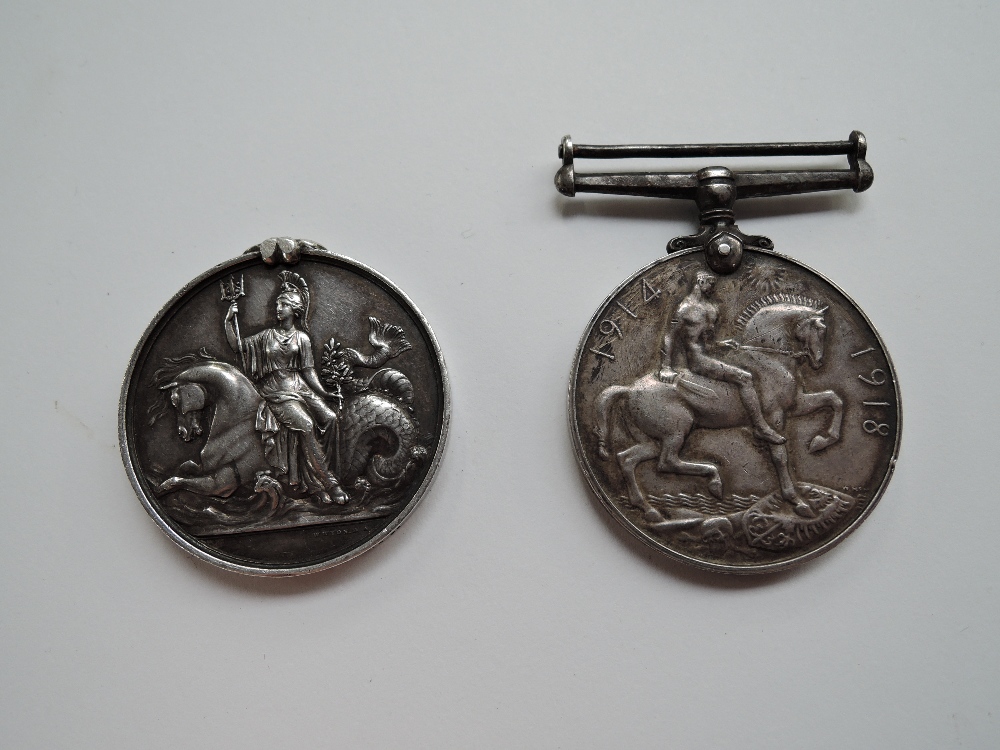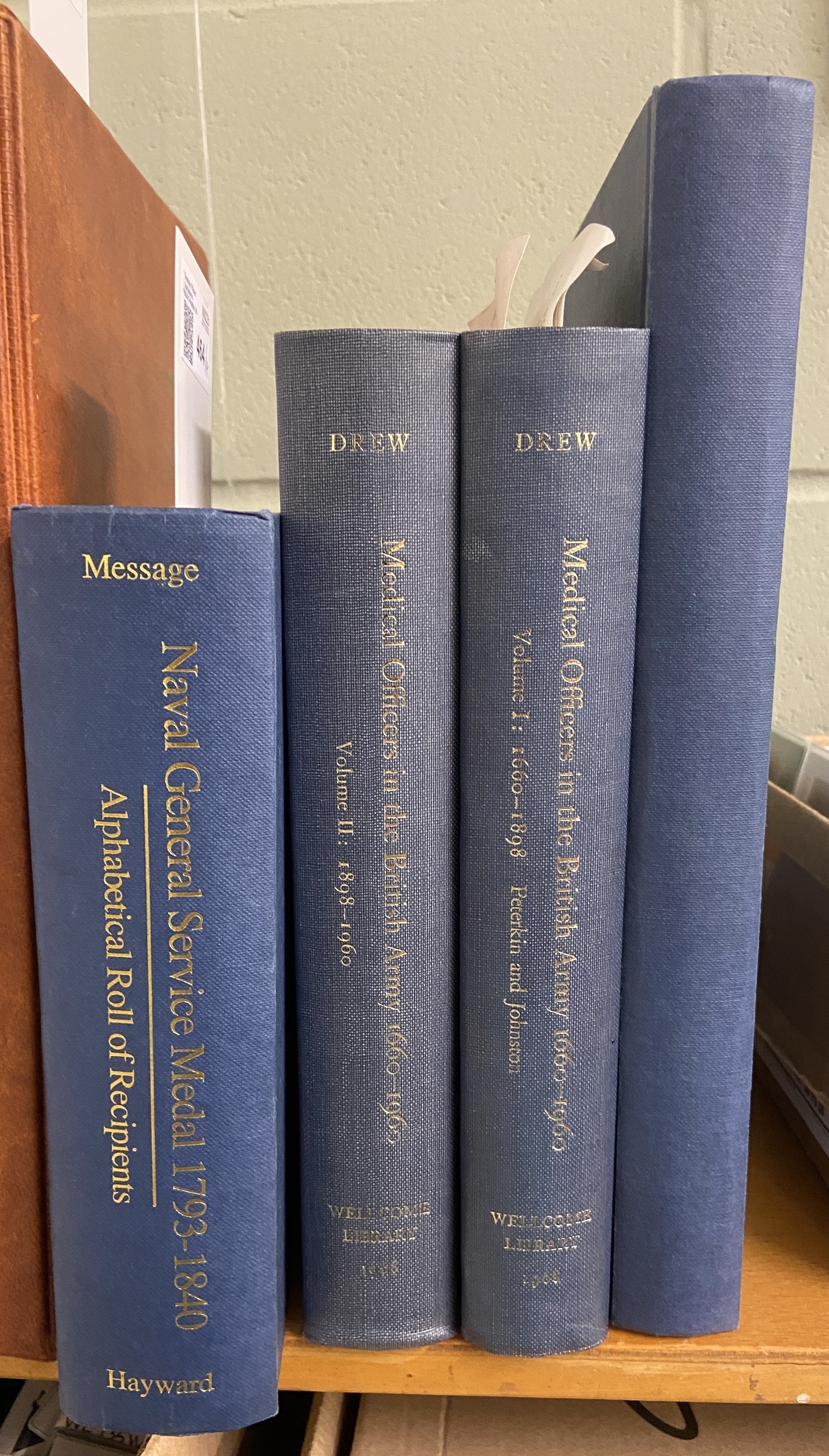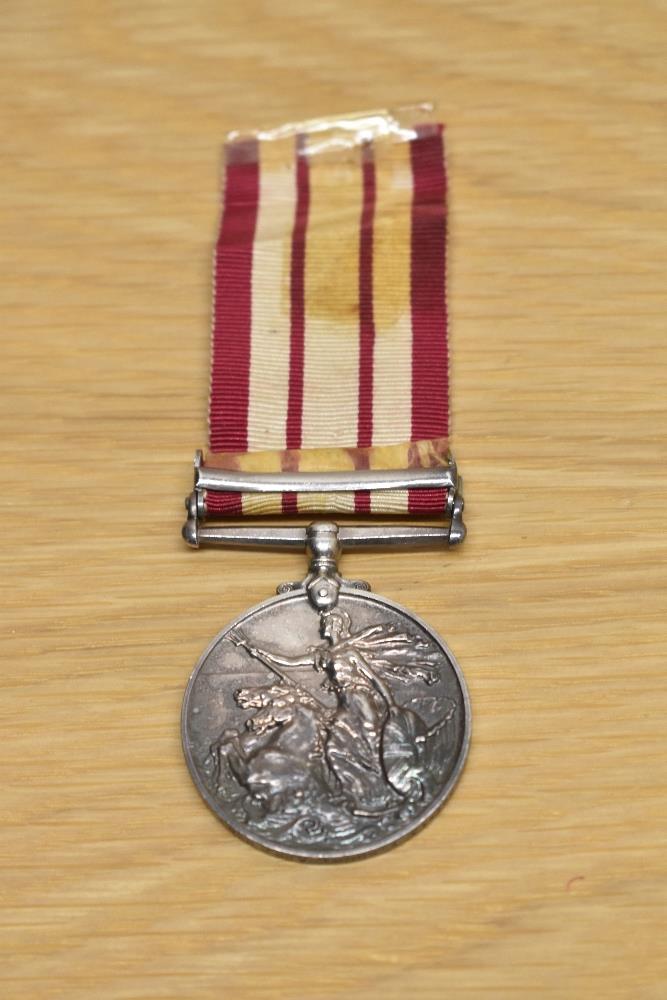NAVAL GENERAL SERVICE MEDAL, 1793-1840, single clasp, 23rd June, 1795, with attractive contemporary silver replacement suspension & bar, with additional silver & glass encasement, this engraved in upright capitals (W. Symonds Midshipman); medal rim itself proud and of correct diameter, believed officially impressed naming beneath, with reverse pin for wear, reverse lunette now missing, with fitted leather and velvet box. Once roughly polished prior to encasement with associated hairlines, otherwise good extremely fine with lustre, silver encasement at reverse with a little damage at 12 o’clock, and a rare and interesting award to a Rear-Admiral. Rear Admiral Sir William Symonds CB FRS, was born in Taunton, Somerset, on the 24th of September, 1782 to an important naval family - being the second son of Captain Thomas Symonds RN, and family friend of Admiral Sir William Cornwallis. After the death of his father in 1793, he began his career at the age of 12, entering the Royal Navy at Torbay on the 27th of September 1794 as a Midshipman in HMS London (98) under Vice-Admiral John Colpoys. He took part in Lord Bridport’s action with the French fleet off the Ile de Groix on the 23rd of June 1795, which after a lengthy pursuit and action resulted in the capture of 3 enemy ships of the line (Alexandre, Tigre, Formidable) prior to their arrival at Lorient. In this action, HMS London played a major role in the final capture of the damaged French vessel Tigre, but suffered only 3 wounded from her crew. In addition, William Symonds was present aboard the same vessel when the French corvette Jean Bart was captured, along with the French frigates Gloire and Gentille, and during the events of the Mutiny at Spithead. William Symonds led a successful and varied career throughout the Napoleonic Wars, and whilst missing out on the famous action at Trafalgar, he took part in numerous lesser actions against privateers and enemy vessels which went without the reward & recognition of further clasps to his medal. He was promoted to Lieutenant on the 10th of October 1801, and was made Magistrate of the Ports of Malta and Captain of Valetta in 1819; during which time he suggested a plan for the transport of Cleopatra’s Needle to London, and he remained in this post until his promotion to Commander on the 4th of October 1825. It was also during this period, however, that he built at his own expense the experimental yacht Nancy Dawson, which was copied and promoted by yachtsman George Vernon this beginning his career in ship design. Having been introduced by Vernon to the Duke of Portland, he was promoted as a designer to Lord High Admiral the Duke of Clarence in April 1827 (later William IV). He was appointed to the Royal Yacht HMS Royal George, and appears to have befriended the Duke of Clarence himself, being made Captain soon after in December that year. Following on from his earlier work with Nancy Dawson and the subsequent design of the sloop Columbine and 50-gun brig HMS Vernon, he was appointed and served as Surveyor of the Navy between 1832 and 1847, when he became involved in the building of most of the new ships of the Royal Navy. During this period of his career, he came into conflict with many who did not share his enthusiasm for new ideas, and who had also suggested somewhat unfairly that he had gained his position by political means rather than by merit. Despite his new ideas, this period marked the gradual decline of large, heavy-rigged ships, and the abandonment of sail in favour of steam power. He was elected FRS in 1835, and was knighted in 1836. In deference to his opponents in the Admiralty he resigned from his position as Surveyor of the Navy in October 1847, and regardless receiving his CB (Civil) on the 1st of May 1848. This last award is believed to have displeased him greatly, feeling that he should have received CB (Military). Sir William was for short time Queen Victoria’s naval ADC, and promoted to Rear-Admiral on the 28th o
NAVAL GENERAL SERVICE MEDAL, 1793-1840, single clasp, 23rd June, 1795, with attractive contemporary silver replacement suspension & bar, with additional silver & glass encasement, this engraved in upright capitals (W. Symonds Midshipman); medal rim itself proud and of correct diameter, believed officially impressed naming beneath, with reverse pin for wear, reverse lunette now missing, with fitted leather and velvet box. Once roughly polished prior to encasement with associated hairlines, otherwise good extremely fine with lustre, silver encasement at reverse with a little damage at 12 o’clock, and a rare and interesting award to a Rear-Admiral. Rear Admiral Sir William Symonds CB FRS, was born in Taunton, Somerset, on the 24th of September, 1782 to an important naval family - being the second son of Captain Thomas Symonds RN, and family friend of Admiral Sir William Cornwallis. After the death of his father in 1793, he began his career at the age of 12, entering the Royal Navy at Torbay on the 27th of September 1794 as a Midshipman in HMS London (98) under Vice-Admiral John Colpoys. He took part in Lord Bridport’s action with the French fleet off the Ile de Groix on the 23rd of June 1795, which after a lengthy pursuit and action resulted in the capture of 3 enemy ships of the line (Alexandre, Tigre, Formidable) prior to their arrival at Lorient. In this action, HMS London played a major role in the final capture of the damaged French vessel Tigre, but suffered only 3 wounded from her crew. In addition, William Symonds was present aboard the same vessel when the French corvette Jean Bart was captured, along with the French frigates Gloire and Gentille, and during the events of the Mutiny at Spithead. William Symonds led a successful and varied career throughout the Napoleonic Wars, and whilst missing out on the famous action at Trafalgar, he took part in numerous lesser actions against privateers and enemy vessels which went without the reward & recognition of further clasps to his medal. He was promoted to Lieutenant on the 10th of October 1801, and was made Magistrate of the Ports of Malta and Captain of Valetta in 1819; during which time he suggested a plan for the transport of Cleopatra’s Needle to London, and he remained in this post until his promotion to Commander on the 4th of October 1825. It was also during this period, however, that he built at his own expense the experimental yacht Nancy Dawson, which was copied and promoted by yachtsman George Vernon this beginning his career in ship design. Having been introduced by Vernon to the Duke of Portland, he was promoted as a designer to Lord High Admiral the Duke of Clarence in April 1827 (later William IV). He was appointed to the Royal Yacht HMS Royal George, and appears to have befriended the Duke of Clarence himself, being made Captain soon after in December that year. Following on from his earlier work with Nancy Dawson and the subsequent design of the sloop Columbine and 50-gun brig HMS Vernon, he was appointed and served as Surveyor of the Navy between 1832 and 1847, when he became involved in the building of most of the new ships of the Royal Navy. During this period of his career, he came into conflict with many who did not share his enthusiasm for new ideas, and who had also suggested somewhat unfairly that he had gained his position by political means rather than by merit. Despite his new ideas, this period marked the gradual decline of large, heavy-rigged ships, and the abandonment of sail in favour of steam power. He was elected FRS in 1835, and was knighted in 1836. In deference to his opponents in the Admiralty he resigned from his position as Surveyor of the Navy in October 1847, and regardless receiving his CB (Civil) on the 1st of May 1848. This last award is believed to have displeased him greatly, feeling that he should have received CB (Military). Sir William was for short time Queen Victoria’s naval ADC, and promoted to Rear-Admiral on the 28th o















Testen Sie LotSearch und seine Premium-Features 7 Tage - ohne Kosten!
Lassen Sie sich automatisch über neue Objekte in kommenden Auktionen benachrichtigen.
Suchauftrag anlegen